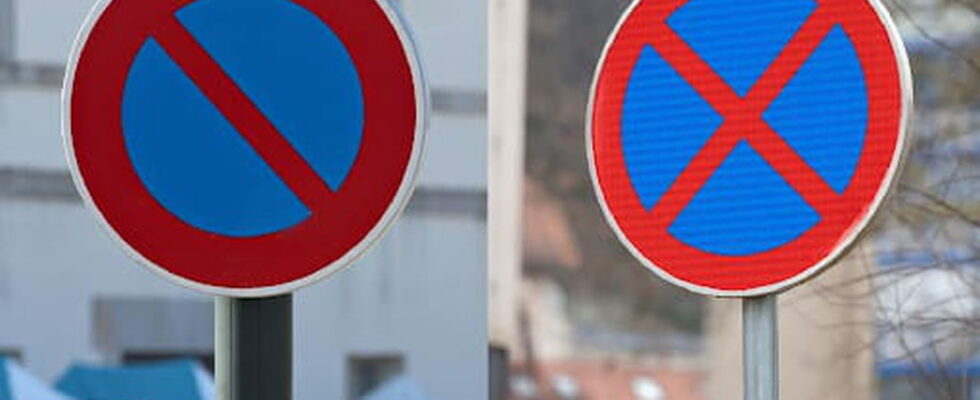These two road signs are very similar. Too many drivers confuse them and risk a fine.
A detail that can change everything. There are around 400 road signs in France and some are almost identical. Unfortunately for motorists, confusing them can lead to a very unpleasant surprise in the form of a fine notice. This is what sometimes happens to drivers who do not differentiate between the two signs, one of which indicates a ban on stopping and the other a ban on parking. Visually very similar, these two signs nevertheless warn of two very different offenses.
According to article R110-2 of the Highway Code, stopping is defined by the momentary immobilization of a vehicle on the road. The driver can drop off or pick up passengers, but also load or unload luggage or goods. He must remain inside or near the vehicle and be able to leave immediately if the situation requires it. Conversely, parking corresponds to the act of parking and moving away from your car, whether for five minutes or three hours.

The problem is when a motorist thinks he recognizes a no parking sign when it is in fact a no stopping sign. It must be said that it is easy to make a mistake. Both are round and crossed out in red on a blue background. But unlike the one indicating the prohibition of parking, crossed out by a single red line diagonally, the prohibited stop sign is crossed out twice, thus forming a red cross on the blue background. And even in good faith – if he only thought he did not have the right to park – the motorist caught by the police stopping in an area where it is prohibited to do so will be fined.
The amount of the fine then varies depending on the classification of the offense. Stopping may be considered inconvenient, dangerous or abusive. The fine is 2nd class, i.e. 35 euros, or 4th class, i.e. 135 euros with a deduction of up to 3 points on the driving license. It’s expensive enough to learn once and for all how to differentiate between these two prohibition signs.
It is also important to know that there are other places on the road where stopping is prohibited even in the absence of the blue sign with a red cross. This is the case before a pedestrian crossing, near an intersection, at the top of a hill, on a narrow road with a continuous line, after a bend, in a tunnel, on a bridge, on the side left of a two-way lane, on reserved lanes (buses, taxis, bicycles, etc.) and on emergency lanes.
